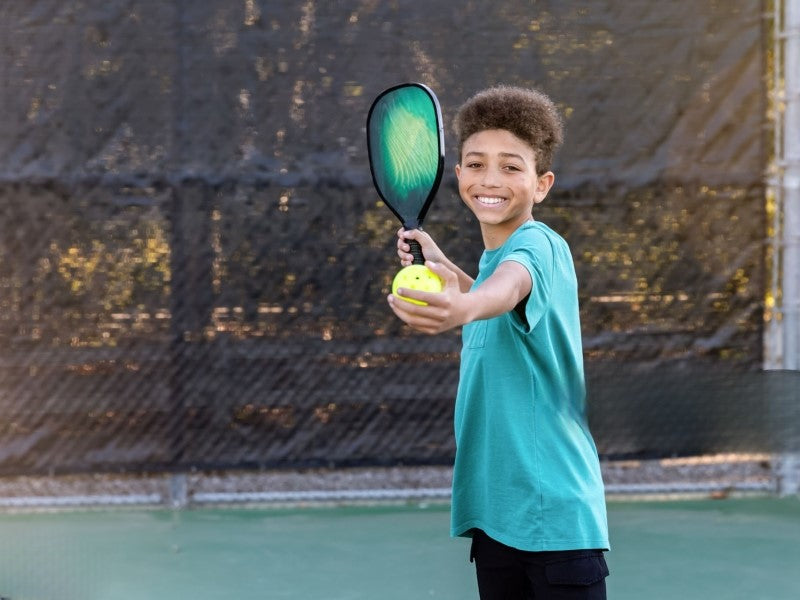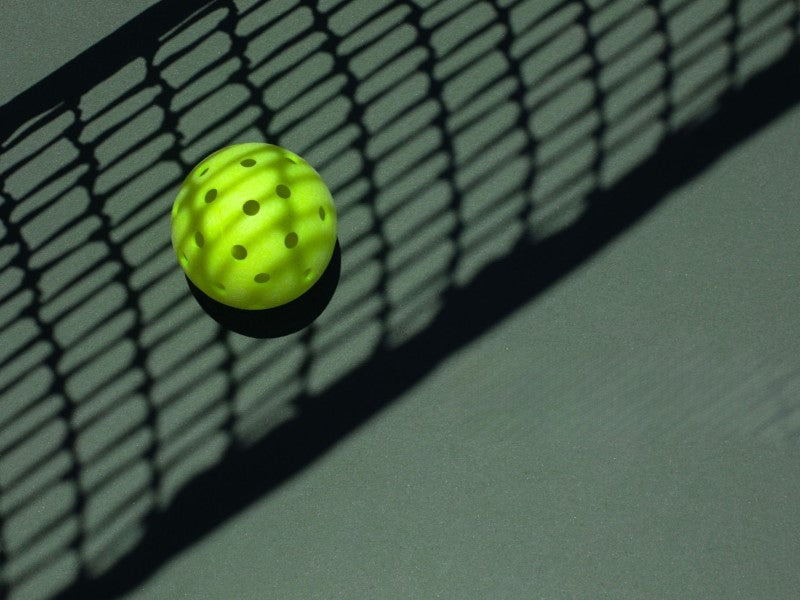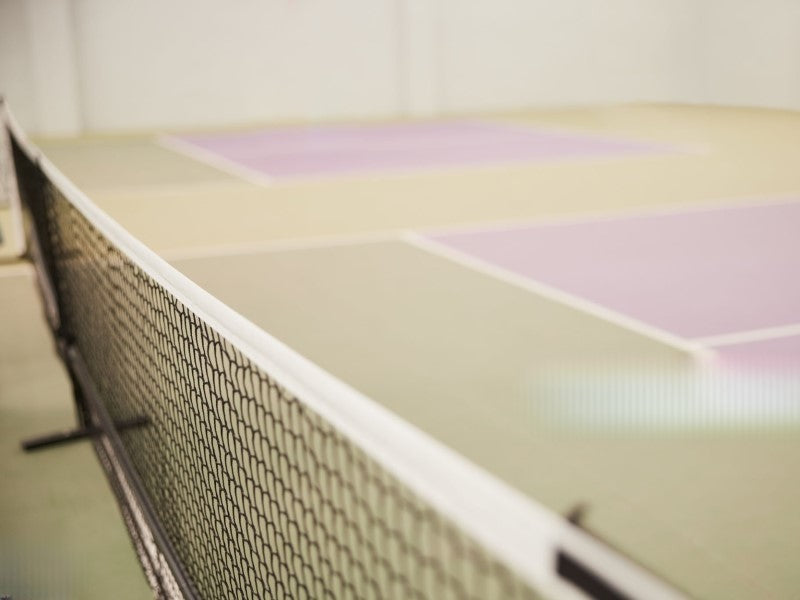If you're getting serious about pickleball, your paddle is your most valuable piece of gear. But no matter how high-end or well-loved your paddle is, it won’t last forever. So the big question becomes: how long do pickleball paddles last, and what can you do to make them last longer?
Average Lifespan of a Pickleball Paddle
General Estimate by Usage Level
· Casual players (1–2 times a week): 1 to 3 years
· Frequent recreational players (3–5 times a week): 6 months to 1.5 years
· Competitive/tournament players: Every 3 to 9 months
The more often you play, the faster your paddle will wear out—especially if you're hitting with power or engaging in fast-paced rallies.
By Paddle Material
|
Paddle Type |
Average Lifespan |
|
Wood |
2–5 years (high durability) |
|
Composite |
1–2 years |
|
Graphite |
6 months–1.5 years |
|
Carbon Fiber |
1–2 years (high-end) |
|
Hybrid |
Varies (1–2 years) |
Each material offers different durability levels. Wood paddles last long but lack performance. Graphite and composite paddles offer performance but have shorter lifespans due to wear on the surface and core.
What Affects a Pickleball Paddle’s Lifespan?
1. Frequency and Intensity of Use
The most obvious factor. The more often you play and the harder you hit, the quicker your paddle wears down.
2. Paddle Surface Material
· Graphite and fiberglass offer great feel but tend to wear faster.
· Carbon fiber is more durable and holds texture longer, making it ideal for spin players.
· Wood is extremely durable but sacrifices performance.
3. Core Material and Construction
· Polymer cores are quiet and soft, but may compress over time.
· Nomex cores are hard and loud, offering more durability but less control.
· Aluminum cores are lightweight but can dent.
4. Environmental Exposure
Leaving your paddle in the car, extreme heat, cold, humidity, or moisture can degrade materials over time. Ultraviolet rays can also deteriorate surface texture and bonding agents.
5. Paddle Maintenance Habits
Regular cleaning, using a paddle cover, and checking grip and edge guards can make a huge difference in how long your paddle lasts.

Signs Your Pickleball Paddle Needs Replacing
1. Dead Spots
If you notice inconsistent bounce or reduced responsiveness in certain parts of the paddle face, it likely has a dead spot—caused by core breakdown.
2. Worn Surface Texture
Textured paddles lose their spin potential over time. If your spin shots are less effective, the paddle face may be too smooth.
3. Edge Guard Damage
A cracked or loose edge protector may over time lead to structural harm to the paddle.
4. Cracks, Chips, or Warping
Visible damage on the paddle’s face or surrounding areas can disrupt balance, strength, and precision. Warping often occurs from moisture exposure.
5. Grip or Handle Wear
If the grip starts slipping or breaking down, it can affect control and comfort. A new grip can fix this, but if the internal handle structure is compromised, it may be time to replace the entire paddle.
Tips for Prolonging the Lifespan of Your Pickleball Paddle
1. Store It Properly
Always store your paddle indoors, away from extreme heat or cold. Avoid leaving it in your car or garage where temperature swings are drastic.
2. Use a Paddle Cover
A simple padded cover helps protect the paddle surface from dings and scratches during travel or in your bag.
3. Clean It Regularly
Clean your paddle’s face with a microfiber cloth after every use. For a more thorough clean, use mild soap and water; avoid harsh chemicals entirely.
4. Avoid Slamming or Tossing
Never bang your paddle on the ground or fence, even in frustration. The internal core and face materials are sensitive to shock.
5. Replace the Grip When Needed
Changing out the grip tape can enhance comfort and extend the handle’s structural soundness. You don’t always need a new paddle—sometimes a new grip is all it takes.
Paddle Lifespan by Player Type
Beginners
· Likely to use mid-range or wooden paddles.
· May keep the same paddle for 1–3 years with light use.
Intermediate Recreational Players
· More frequent play leads to surface wear and core fatigue.
· Expect replacement every 9–18 months depending on paddle quality.
Advanced and Competitive Players
· High-performance paddles wear faster under aggressive play.
· Replacement may be necessary every 3–6 months to maintain top performance.

When It’s Time to Upgrade
1. Your Paddle Feels Flat
Even if it’s not visibly damaged, an older paddle can lose its pop. If your shots feel dull or require more force, it may be time to upgrade.
2. You’re Advancing in Skill
As your game improves, you may need better paddle responsiveness, weight balance, or spin texture. Avoid letting a beginner-level paddle limit your progress.
3. New Technology Is Available
Paddle tech evolves quickly. New cores, edge guards, and surface treatments may offer meaningful performance upgrades.
FAQ: Pickleball Paddle Lifespan
Q1: Can I still use a paddle after it has a dead spot?
You can, but performance will suffer. It’s better to replace it, especially if you're playing in tournaments.
Q2: What paddle material lasts the longest?
Wood is the most durable but least responsive. Carbon fiber provides strong durability and a well-balanced performance.
Q3: What is the recommended frequency for replacing grip tape?
Every 3–6 months for regular players, or sooner if you notice slipping or wear.
Q4: Can a cracked paddle be repaired?
Minor chips can be patched, but cracks or core damage usually mean it’s time for a replacement.
Q5: Does playing outdoors affect paddle lifespan?
Yes. UV rays, moisture, and dirt can shorten the life of your paddle. Use covers and store indoors whenever possible.
With the right knowledge and care, you’ll know exactly when to retire an old paddle and welcome a new one into your game.
So, how long do pickleball paddles last? It depends on how often and how intensely you play, what materials your paddle is made of, and how well you care for it. On average, you can expect anywhere from 6 months to 2 years of solid play from a quality paddle.
Pay attention to performance changes, inspect your paddle regularly, and follow good maintenance habits to get the most out of your investment. Understanding when to replace your paddle helps you remain skillful, secure, and competitive during play.









Leave a comment
This site is protected by hCaptcha and the hCaptcha Privacy Policy and Terms of Service apply.